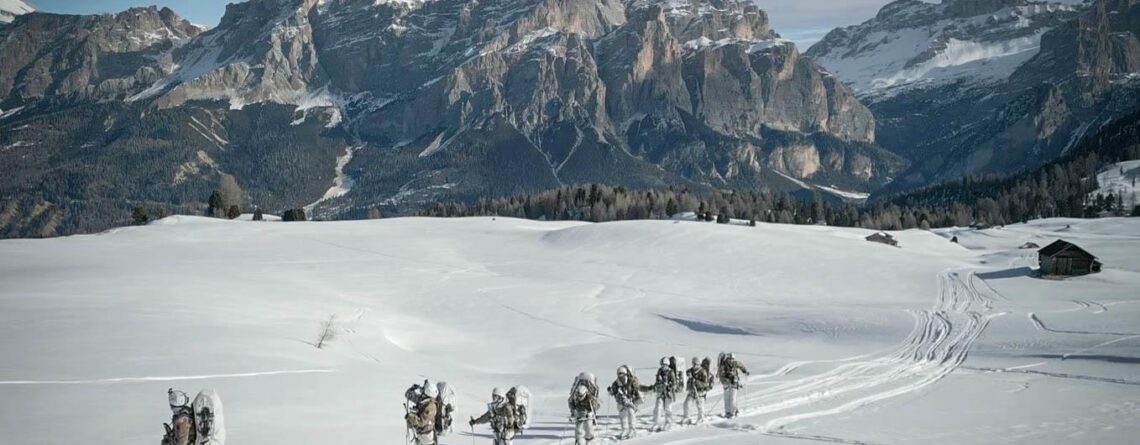Patrolling The Alps: “Ice Patrol” exercise in demanding South Tyrol mountains
The international exercise “White Fox 2024” recently concluded in South Tyrol, involving mountain troops combat activities in mountainous and winter environments. The exercise included three distinct exercises: “Winter Resolve,” “Ice Patrol,” and “Ice Challenge.” The “Winter Resolve” exercise, concluded earlier in Piedmont, prepared a Tactical Group for participation in the “Nordic Response” exercise in Norway. “Ice Challenge” was an individual competition combining ski mountaineering and target shooting.
The aim of the “Ice Patrol” exercise is to test the level of combat training in the snowy winter environment at the team / squad level. During this iteration, the exercise featured 14 patrols (13x Italian Alpine troops, 1x Romanian mountain troops) completing reconnaissance missions over three days, facing typical mountain conditions of Alta Val Badia near Corvara.
Each patrol was assigned a reconnaissance mission to be completed within 48 hours over 3 days along a route of approximately 20 kilometers and 1000 meters of vertical elevation, facing a series of selected and well prepared tasks and scenarios, while each of given activities were evaluated by skilled mountain instructors. The evaluated tasks in this exercise iteration were as follows:
- Troop leading procedures (TLPs) – planning and rehearsal with the use of a plastic (3D) model.
- Wounded transport utilizing a stretcher/sledge on a defined route (across various slopes) over a 2km distance.
- Tactical movement day and night (including route selection and illumination discipline) within a time limit.
- Overcoming natural obstacles (uphill, downhill, crossing) within a specified time limit.
- Patrol Base (setup, emphasis on occupation, camouflage, routine, noise discipline, security measures, departure).
- Observation point (establishing an OP, preparing SITREPs, preparing Range Cards, transmitting data from the OP to the Patrol Base).
- Transmission test (transmitting SITREPs in accordance with standard NATO procedures as listed in NATO ACP-125F – Communications Instructions).
- Individual weapons shooting (using marking ammunition – 10 rounds per assault rifle, 30 rounds per machine gun, targeting fixed and moving targets).
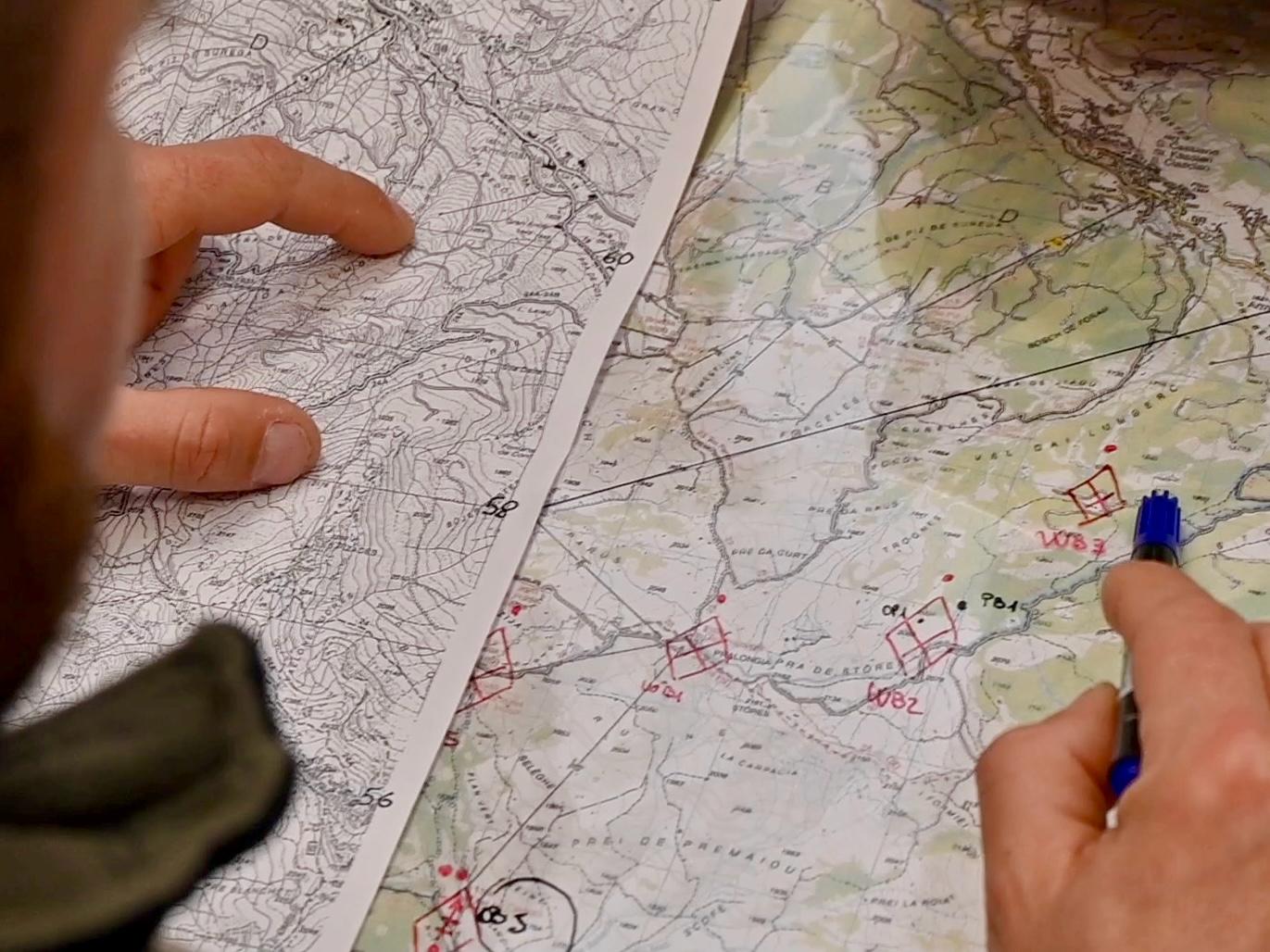
Planning process needs to cover not only own tasks and likely enemy locations, but also adapt to existing objective mountain hazards. (Credit: ITA Army)
Upon receipt of the OPORD (covering the situation and intent two levels up), patrol commanders were issued a Warning Order (WNGO) narrowing their tasks to conduct a reconnaissance patrol in order to locate a given objective and to report gathered information to address the Collection Plan information requirements. All patrol members participated in the following planning and rehearsals at the premises of the military installation Villaggio Alpino “Tempesti” (Corvara in Badia). As stated above, the rehearsal and clarity of the patrol commander’s plan were the first evaluated tasks.
After the planning phase, one of the most important stages commences: preparation for the mission. Given the complexity and risks of the exercise environment, the quality of individual and collective preparation could literally be the pivotal point of success or failure for the mountain patrol.
Based on previous, long-term experience of the Italian “Alpini” professionals, following individual equipment was mandatory: ballistic helmet, avalanche transceiver / beacon, snow shovel, avalanche probe, eyes / ear protection and first aid kit. Each patrol has also carry at least two radios. Recommended material was as follows: white snowshoes, crampons, ice axe, ski crampons, stretcher, skis, climbing skis, ski poles and set of MW mountaineering equipment. All the material requirements were in advance communicated with the participants.
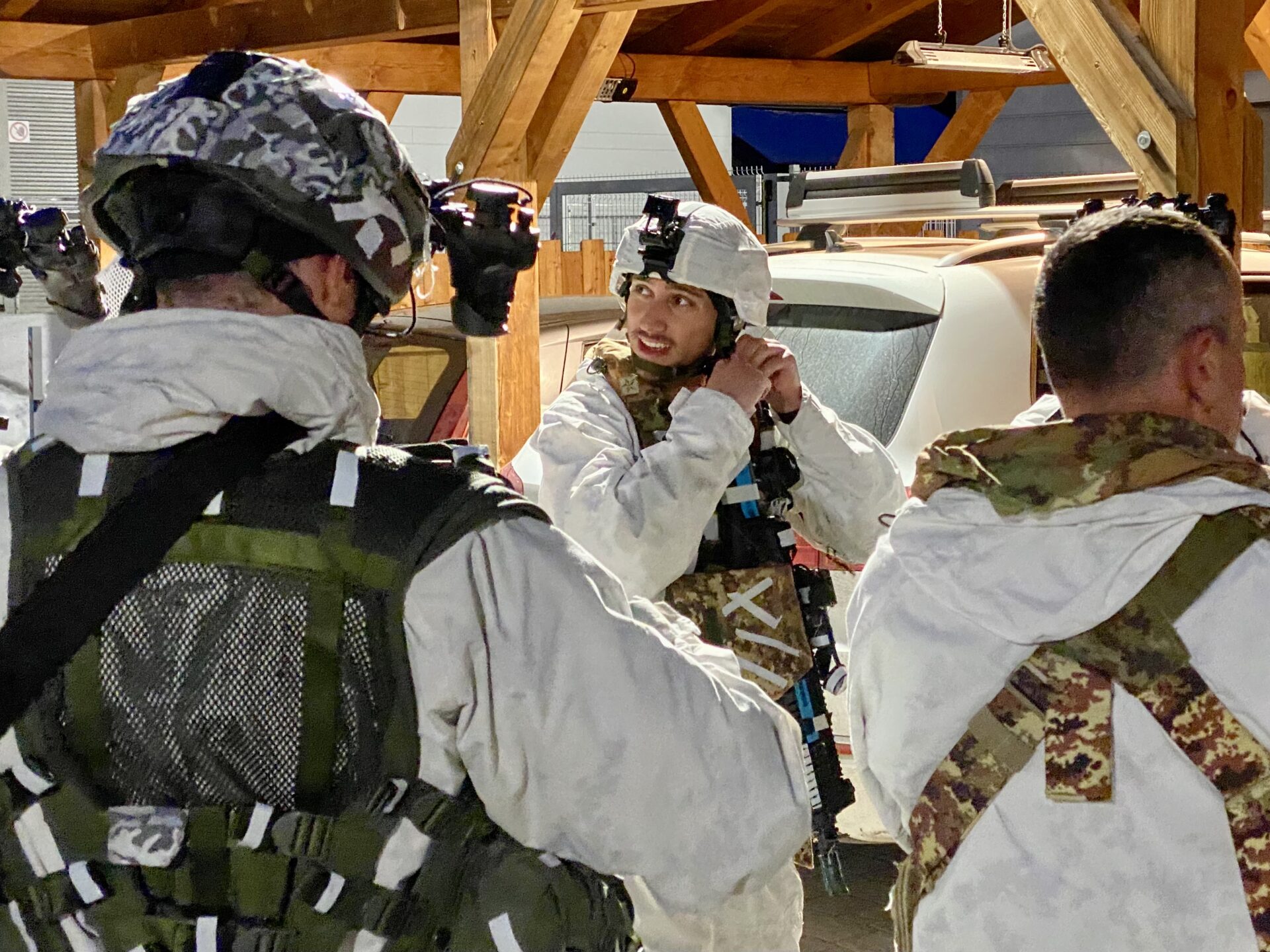
Preparation before insertion is a key step that demands not only skilled individuals but also a comprehensive understanding of the upcoming tasks in the challenging mountain environment. (Credit: NATO MW COE)
The insertion of the patrols commenced on the 20th of February in the late evening hours, after all planning, back-briefs, and preparation were conducted. All patrols were inserted at given time intervals (allowing enough space for each unit’s freedom of maneuver) in the vicinity south of Armentarola. The actual movement started from there, one patrol at a time. The main task for that night was to conduct tactical movement on snowy terrain to the designated area, where the Patrol base was planned to be established, and to safely and securely spend the night hours until the next morning.
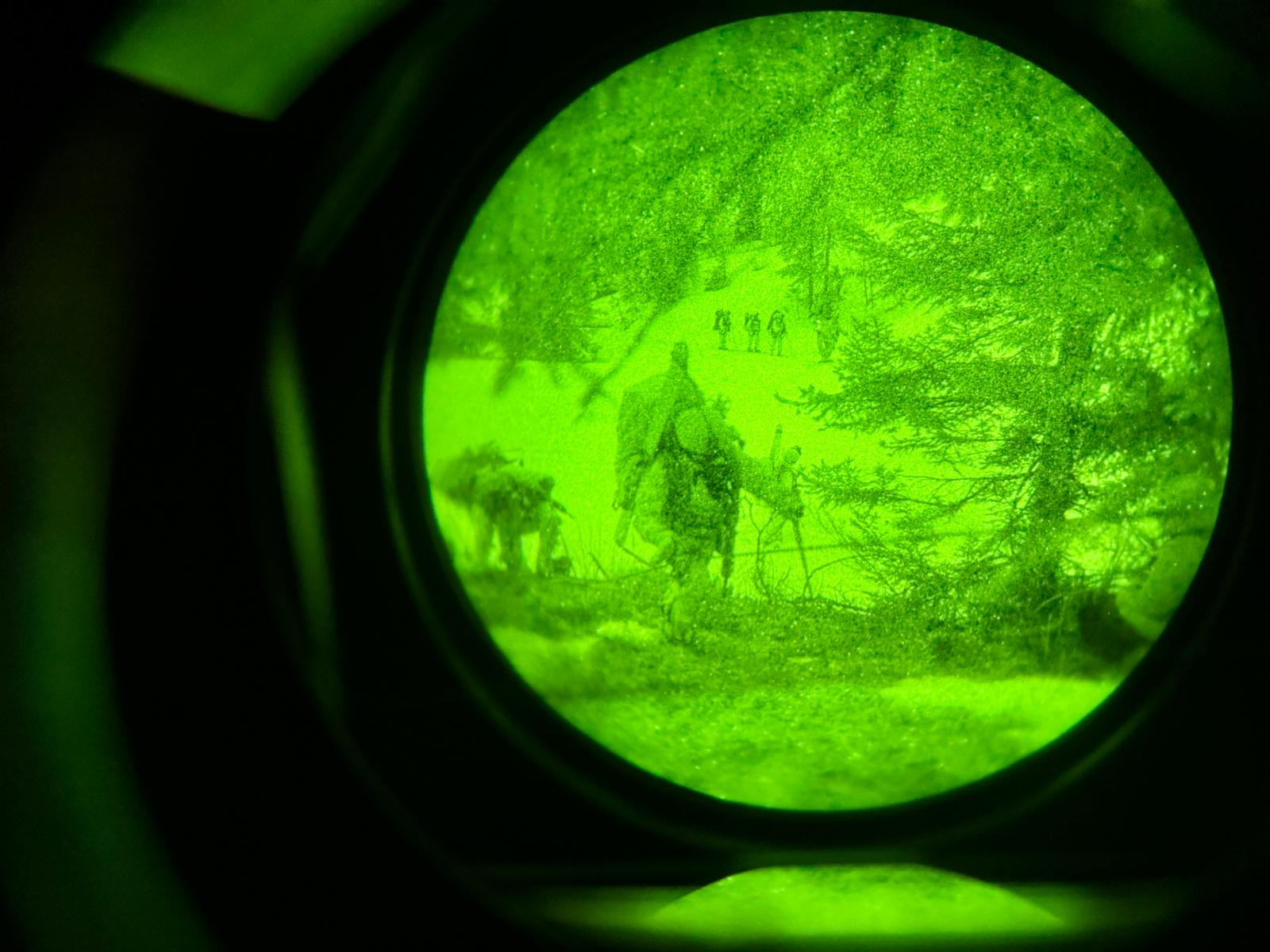
The patrol approaches the designated area in the complicated mountain terrain at night, while being observed by experienced mountain instructors on-site.(Credit: ITA Army)
However, in the early morning hours, the patrols leave their positions and the busy day commences. Movement on thick snowpack is locally interrupted by areas of melted snow, which makes every stage of maneuver challenging. However, the route selection and utilization of snowshoes and skis are left to each patrol commander’s decision. All activities of participating units are continuously observed and evaluated, with special attention given to safety measures. Throughout the entire exercise, activities were supported by an established mountain cell and an online geo-meteorological service, while several rescue teams were on-call and ready to assist in case of need.
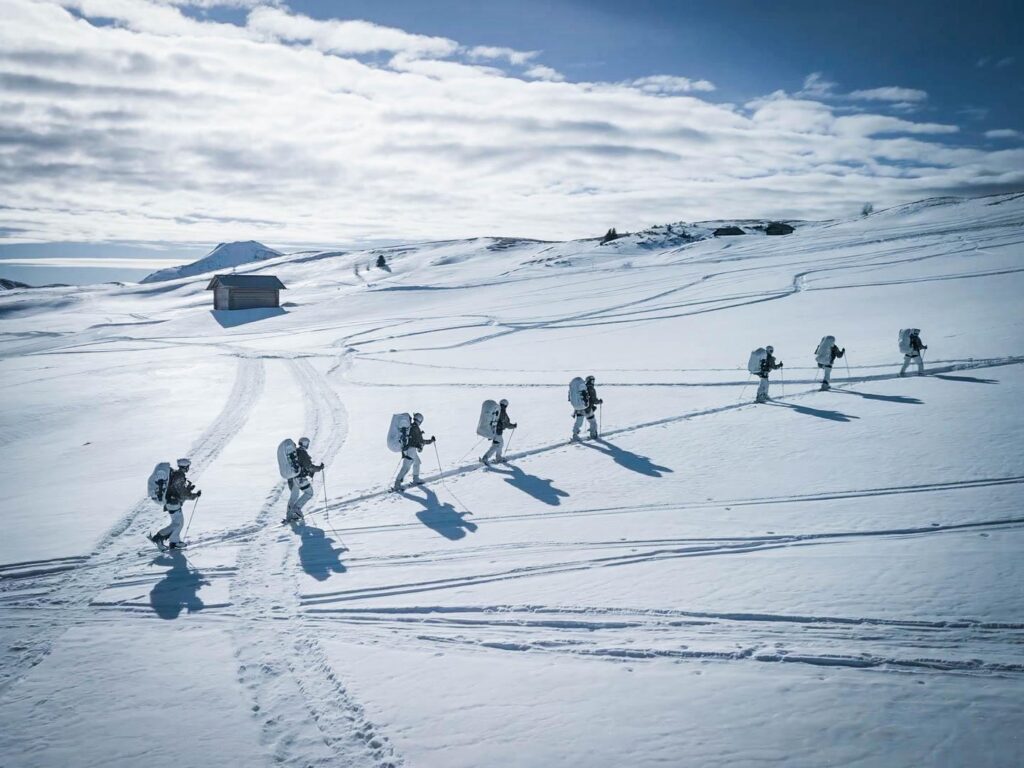
Snow, steep slopes, and concerns about safety and security are transforming the breathtaking scenery of the Dolomites into a challenging, unforgiving opponent.(Credit: ITA Army)
During onward movement, patrols are reaching designated areas one by one, with various tasks to accomplish. Among other tasks, an additional FRAGO is issued to the patrol commander, informing them of the mission update and specifying the task to conduct an ambush on the enemy at the given objective. Upon receiving the order, the patrol moves into the designated area where a hasty patrol base is established, followed by reconnaissance of likely enemy positions and possible movement routes. At this point, the RECCE (Reconnaissance) patrol is no longer restricted by self-defense rules of engagement (ROE) criteria and is allowed to engage the enemy as necessary.
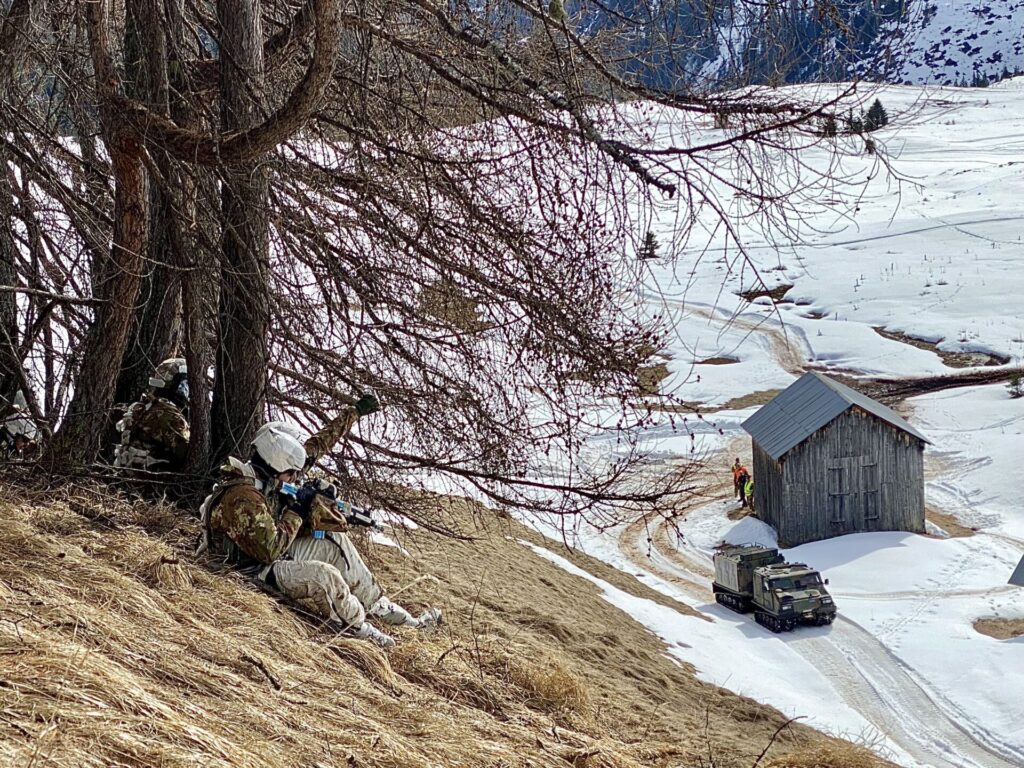
The patrol sets up an ambush site after conducting site reconnaissance and planning. Targets are positioned on the (ENY) vehicles to enable evaluation not only based on tactical behavior but also on firing time and accuracy. (Credit: NATO MW COE)
After the ambush, the patrol is instructed to prepare for another task: transporting their wounded squad member to a designated location. For this task, the patrol is allowed to use a stretcher, sled, or improvise using carried materials and skis (for example, creating an improvised sled by combining a snow shovel and skis tied together with a rope). The distance ahead is approximately 2 km over various slopes, which significantly complicates movement. Additionally, the wounded person not only needs to be transported but also must be secured in a lying position with suitable thermal cover. Furthermore, their weapon and equipment need to be evenly distributed among the other patrol members.
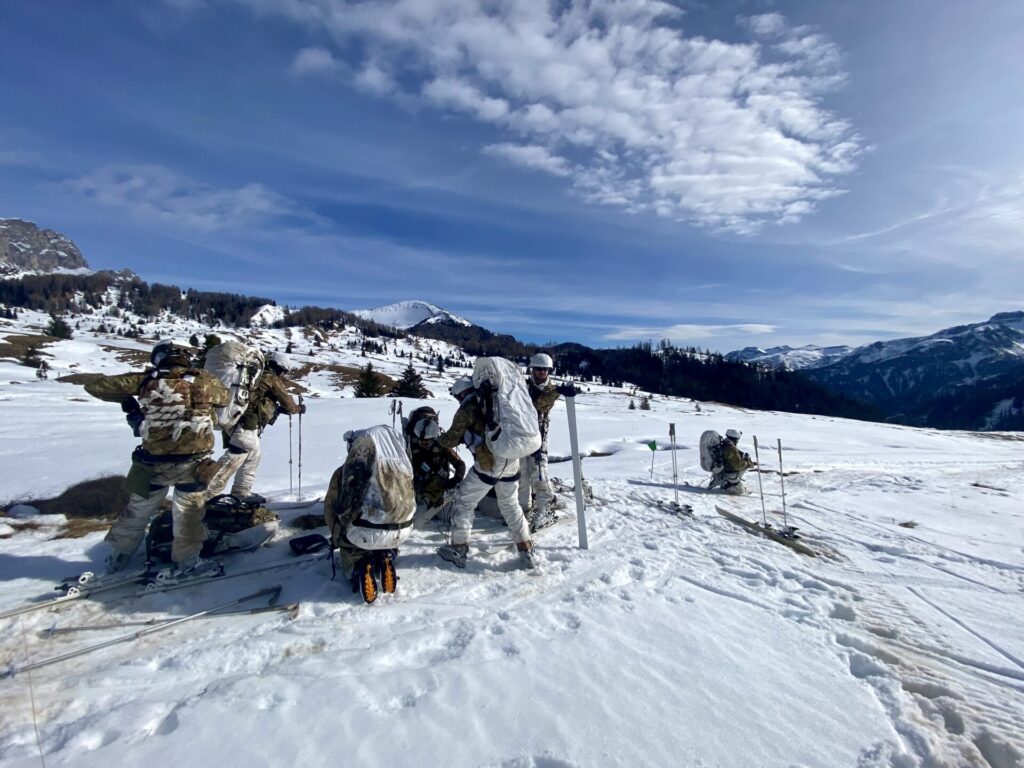
The patrol is preparing to transport the wounded person using an improvised sled, which combines skis and a snow shovel… while the time is ticking! (Credit: NATO MW COE)
During the next stage, the patrol is reassigned by a third FRAGO to move to a destroyed enemy position, with the mission to recover enemy cache and proceed to a designated tactical assembly area. However, to accomplish this seemingly straightforward task, the patrol must overcome a natural obstacle and descend a steep slope using mountaineering equipment, all during night hours, as the given location is several kilometers distant. Upon reaching the obstacle area, safety and security measures need to be carried out by the patrol commander, who – after careful site reconnaissance – needs to plan the method of crossing, assign appropriate tasks to his unit, and maintain perfect control over the execution of overcoming the obstacle. This task is being evaluated by instructors on the site with accent on safety, security, time, noise and light discipline and correct technical procedures.
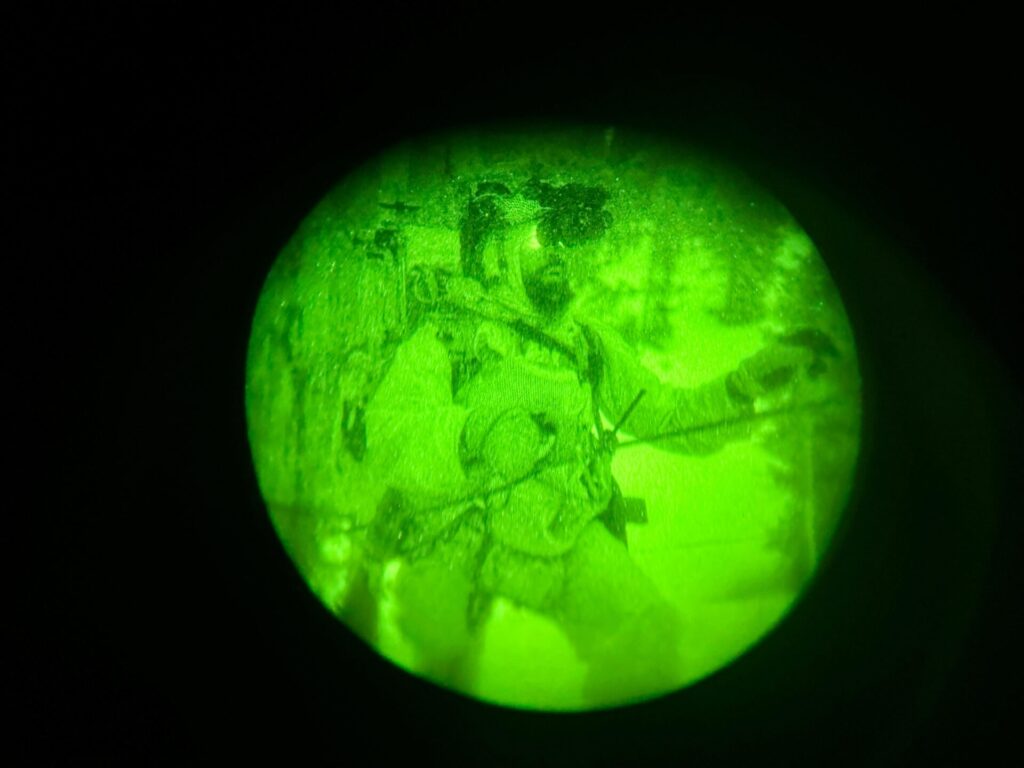
The patrol is conducting obstacle overcoming during nighttime hours. This task is challenging not only due to limited visibility caused by low illumination but also because of the restricted field of vision of the night vision systems. (Credit: ITA Army)
The Ice Patrol exercise concluded with reaching of given Patrol base vicinity and its build-up, while standardized reports were required to be prepared and transmitted to the HQ. In the early morning hours following the second night, patrols were extracted from the Area of Operations (AOO) and transported back to headquarters at Corvara in Badia. Upon arrival, EXCON conducted a debriefing session with all patrols, aiming to identify potential areas for improvement in future exercise iterations.
From the NATO MW COE perspective, the “Ice Patrol” exercise has represented a significant opportunity for all participating units and specialists. It has allowed them to not only engage in tactical activities but also to test the utilization of various mountaineering and survival techniques, including bivouacking, in demanding environments. These exercises take place under the challenging conditions of mountainous terrain, amidst sleep deprivation, and physical exhaustion.
We hereby congratulate all participating units for their immense effort in accomplishing all the tasks, and we extend our thanks to the Italian Alpini for inviting our team to support and participate in this event:
GRAZIE MILLE & CI VEDIAMO!


